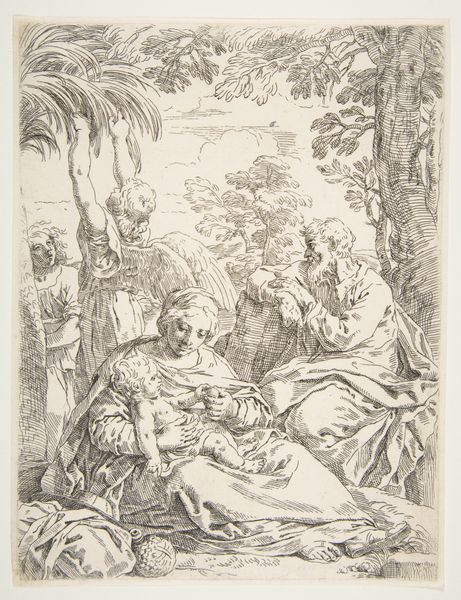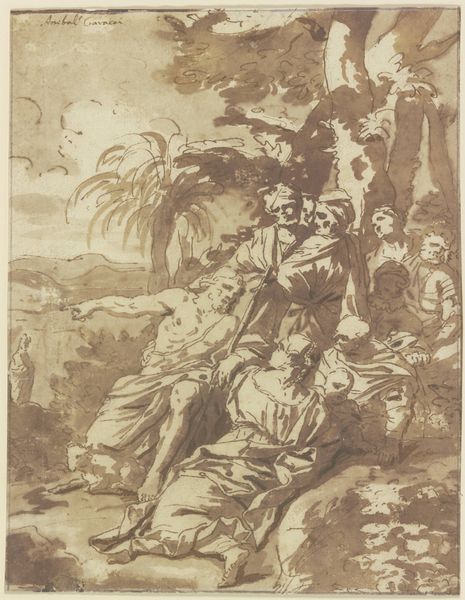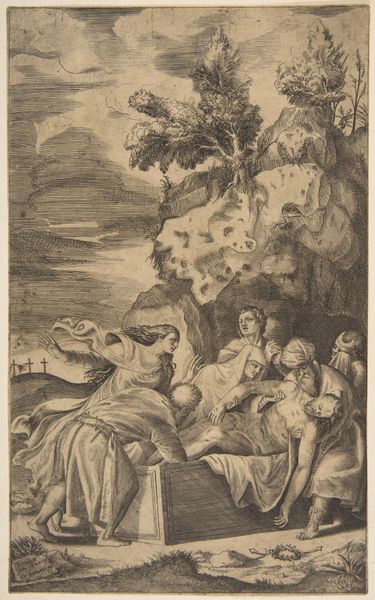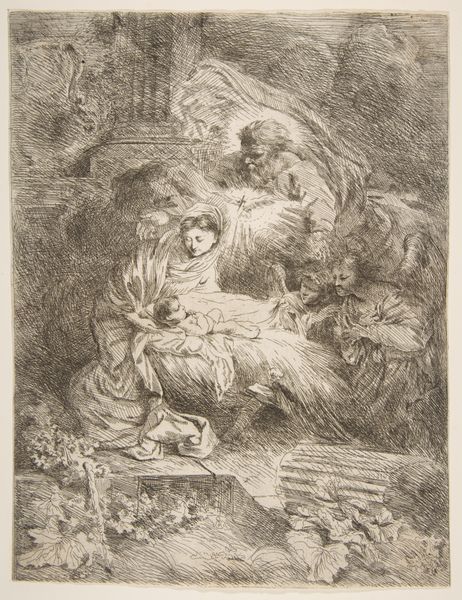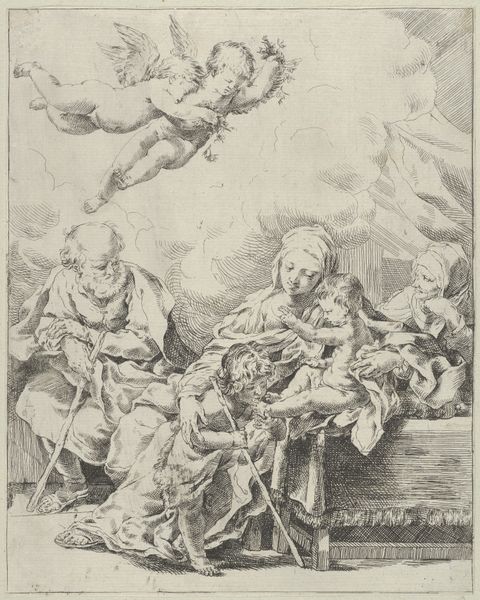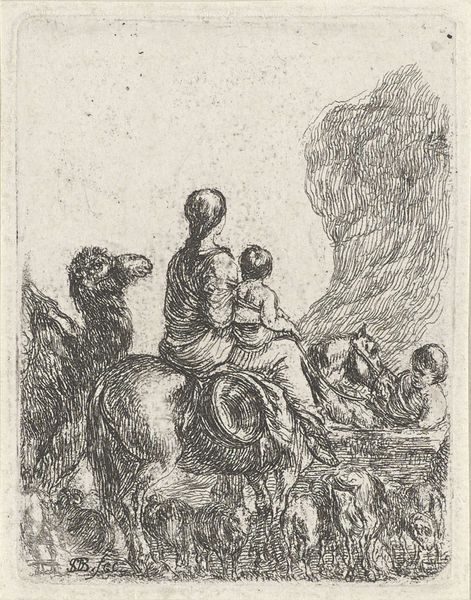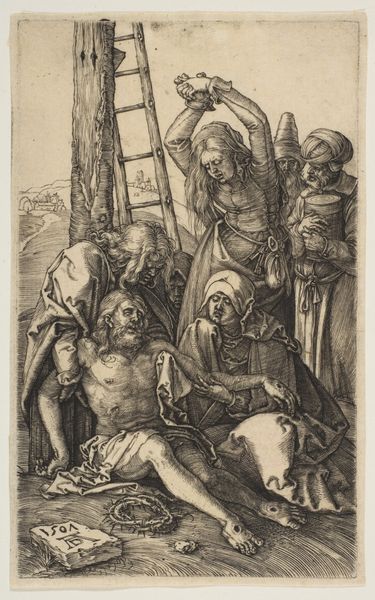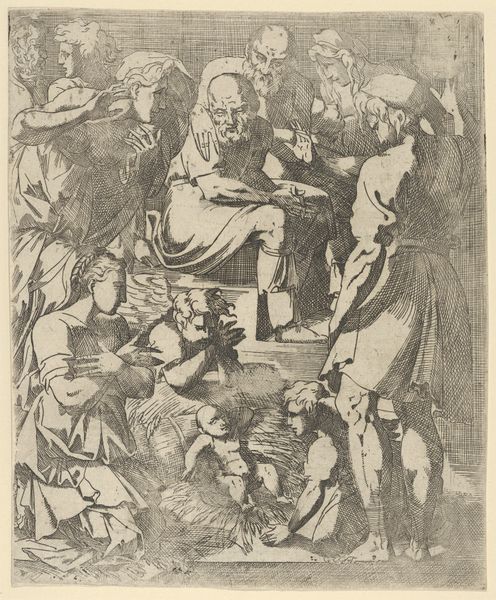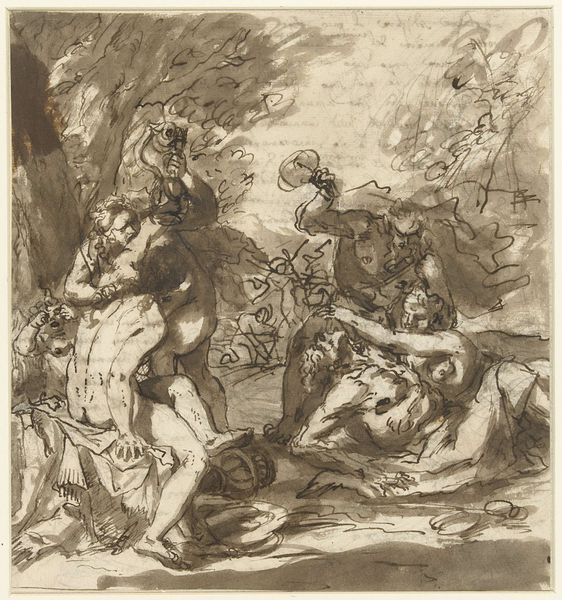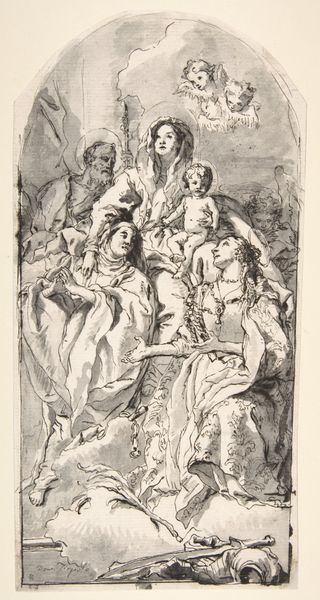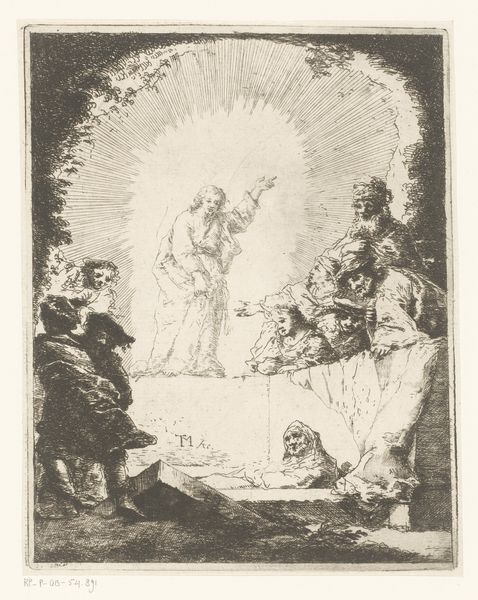
Repose in Egypt, Holy Family seated while an angel pulls at tree branches, copy after Cantarini 1632 - 1642
0:00
0:00
print, fresco, engraving
#
baroque
# print
#
fresco
#
history-painting
#
engraving
#
angel
Dimensions: Sheet: 9 11/16 × 6 15/16 in. (24.6 × 17.6 cm) Plate: 8 3/8 × 5 5/8 in. (21.3 × 14.3 cm)
Copyright: Public Domain
Editor: So this engraving, “Repose in Egypt,” made sometime in the 1630s or 40s, is actually a copy after Simone Cantarini. It's interesting—the figures seem almost dreamlike and kind of float in the scene. What do you make of that ethereal quality? Curator: Oh, that floaty feeling! I think it comes, in part, from the Baroque aesthetic. Look how the artist uses line, not just to define forms but to suggest movement. That angel tugging at the tree – a beautifully human gesture interrupting this holy scene, wouldn't you say? There’s a gentle narrative being woven through these very lines, a subtle but urgent quality I see. What's your take? Editor: Yes, that gesture with the tree is arresting! And I do see the way line creates movement, particularly with the angel pulling at the branch and directing the viewer to gaze upon the holy family seated on the ground. It's like Cantarini isn’t just telling a story, but inviting us to witness an intimate moment. Curator: Exactly! And think about this “copy after,” right? What does it mean to reinterpret another's work, especially a fresco, through the very different language of engraving? Isn’t that intriguing? Editor: Absolutely, to consider its artistic interpretation. Seeing this delicate print really changes how I think about Baroque art; beyond grand gestures, there's an emphasis on intimate, human stories that can transcend its size or materiality. Curator: Right, because that ethereal feeling…it lives in the space *between* the lines, too. Glad we saw that together, it offers a glimpse, or echoes, a whispered prayer almost.
Comments
No comments
Be the first to comment and join the conversation on the ultimate creative platform.
